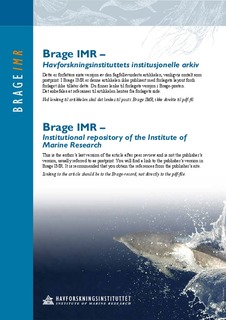| dc.description.abstract | As known from mammalia, the co-receptors CD4 or CD8 associate with a lymphocyte cell-specific kinase (Lck) upon T-cell activation. Lck phosphorylates tyrosine residues within the CD3 chains, providing docking sites for a 70 kDa zeta-associated-protein (ZAP-70), a tyrosine protein kinase important for T-cell signaling. The sequences of a CD4-like gene (CD4-2), Lck, and ZAP-70 were cloned, characterized, and the relative expression pattern was explored in several organs of Atlantic halibut (Hippoglossus hippoglossus L.). Important structural features, as a signal peptide, two Ig-like domains followed by a connecting peptide, a transmembrane region, and a CxC motif within the cytoplasmic tail were conserved within the predicted halibut CD4-2 protein. The deduced halibut Lck protein sequence was found to be composed of a N-terminal Src homology (SH) 4 domain, required for membrane attachment and CD4/CD8 binding, SH3 and SH2 adapter domains, and a SH1 domain followed by a regulatory C-terminal tail (COOH-domain). Tyrosine residues important in Lck activation were conserved within the SH1 and COOH-domain. Structural features of ZAP-70 as tandem SH2 domains and a C-terminal SH1 domain were predicted within the halibut ZAP-70 sequence, having the highest level of conservation within these regions. Several important phosphorylation sites found to play a critical role in T-cell antigen receptor signaling in mammalian were conserved. The overall expression pattern of the three genes was highly similar, showing the highest mRNA level of all three genes in thymus. Some expression was seen in spleen, anterior and posterior kidney, gills, and fin, as seen for other halibut T-cell markers. This study will enable further experiments on halibut T-cell signaling and activation, and enhance understanding about the development of immunological memory T-cells of halibut. | en_US |
